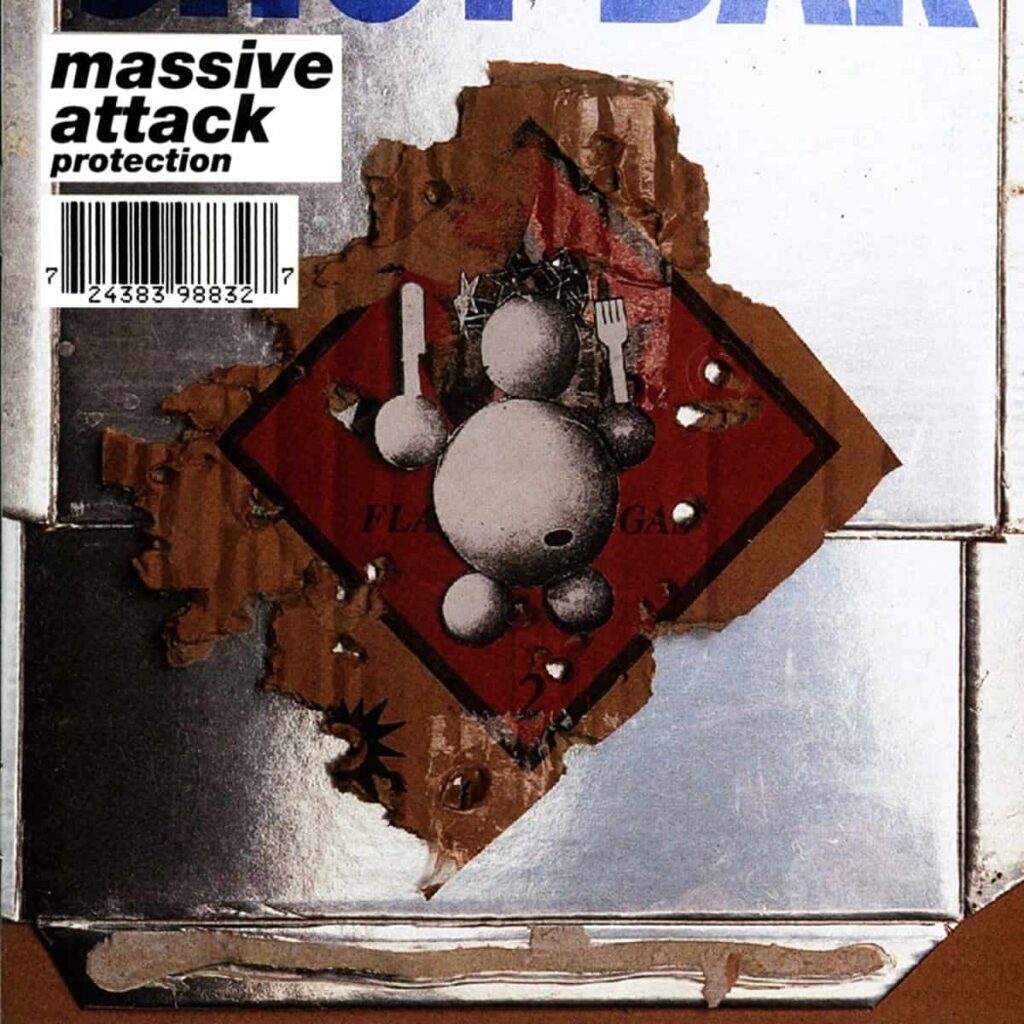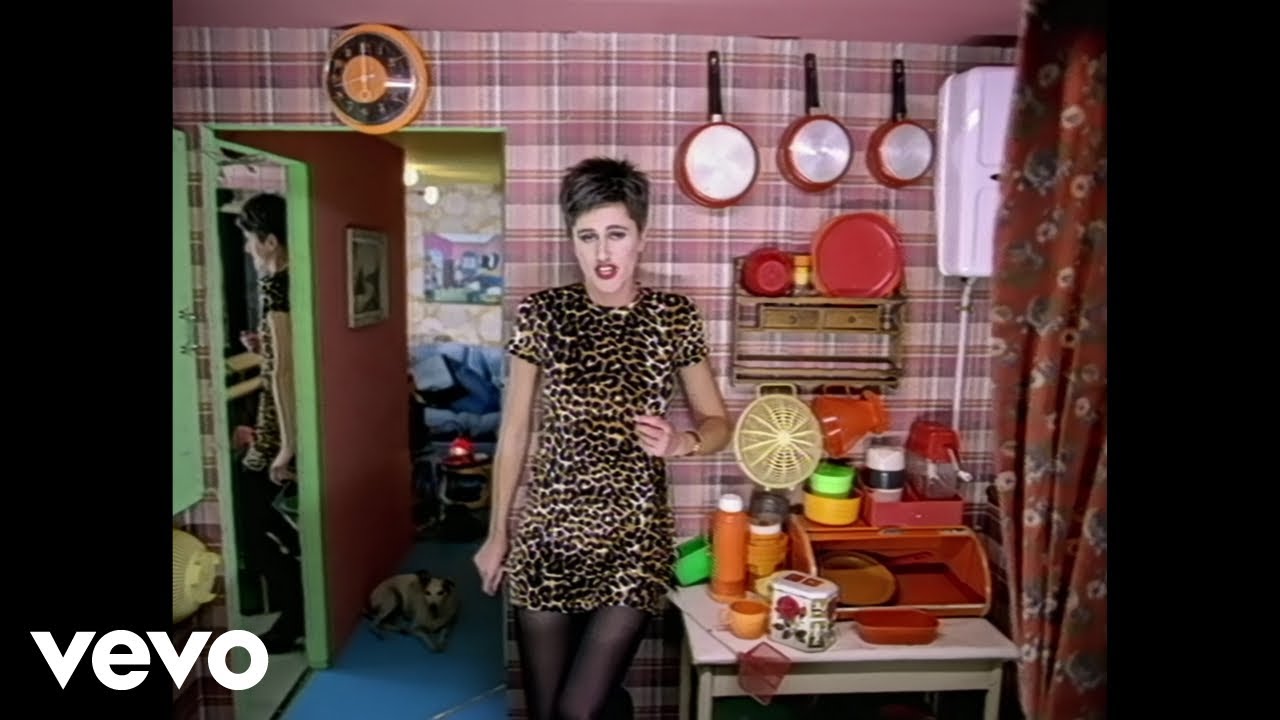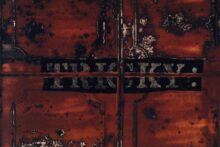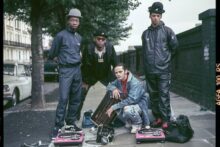In late August, Massive Attack attempted something ambitious: a large-scale, low carbon music festival. The Bristol band, long vocal about climate action, hosted a mini festival called Act 1.5 — billed as the lowest carbon festival of its scale. An estimated 30,000 party people descended on Clifton Downs for concerts powered entirely by renewable energy. Attendees were encouraged to ditch their cars and arrive by bike or on foot; local residents were given priority in ticket sales. Their first Bristol show in five years, it was fitting that to make this statement about climate action, Massive Attack came home to a city where, much earlier, they had helped pioneer another movement.
Trip hop became the catch-all term for the brooding, melancholy, bass-heavy music that emerged from Bristol in the late 1980s, and took hold in clubs across England before achieving global success. Borrowing from jazz, funk, reggae, soul and hip hop, it wielded the tools of electronic music for unfettered creativity, as well as samples unearthed by true music lovers.
But lyrically and sonically, trip hop eschewed commercial convention in favour of dark, enticing club records, dance music laced with gloom rather than celebration. Massive Attack solidified their position as flag bearers for this entrancing sound with Protection, their second LP, which turns 30 this month. Considered one of the best albums of the 1990s, Protection was crafted by the core lineup of Grant “Daddy G” Marshall, Robert “3-D” Del Naja and Andrew “Mushroom” Vowles, and produced by Nellee Hooper. The record’s slow enveloping grooves were bolstered by standout vocal appearances from Everything But The Girl’s Tracey Thorn, Nicolette Suwoton, reggae legend Horace Andy and frequent collaborator Tricky, before he left to pursue a solo career.
Title track ‘Protection’ is sweet perfection, with Thorn’s ethereal vocals floating over a throbbing rhythm based on a fragmented guitar sample from James Brown’s 1973 funk revenge opus ‘The Payback’. Tricky and 3D’s understated raps enhance the foreboding rhythm of the excellent ‘Karmacoma’, whose fever-dream music video – directed by filmmaker Jonathan Glazer – helped raise the band’s visibility outside the UK. Still, trip hop’s grittiness was undeniably homegrown, and nurtured without any aim for mass appeal. “This was a real British thing, even pinpointing it down to a West Country thing,” Marshall told the BBC’s Soul Britannia programme in 2007.
Bristol had witnessed a large-scale influx of immigrants from the Caribbean following World War Two; they often faced exclusion from the existing clubs and social spaces, and found refuge in community and cultural practice, including soundsystems. Several future members of Massive Attack had themselves started as a soundsystem crew running with the Wild Bunch — a collective of musicians and artists that made its mark in the city’s underground. While many of trip hop’s pioneers were not formally trained, they “had learned their skills from sound-system parties and patient listening to the new sounds of American hip-hop, which were received […] as part of a whole integrated sub-culture of beats and attitude, art and dance,” as Phil Johnson put it in his 1996 retrospective Straight Outa Bristol: Massive Attack, Portishead, Tricky and the Roots of Trip-Hop.
Over time, soundsystem culture started to fuse with increasingly popular hip hop, and the Wild Bunch and their associates started moving from house parties to the clubs. In the studio, DJ duo Smith & Mighty, creative forces in that same scene, helped formalise the hip hop, soul and dub blends that would in turn influence trip hop, through their first single ‘Anyone’ and then their production of Massive Attack’s first single ‘Any Love’, both in 1988. Further afield, groups like Soul II Soul in London and Nightmares On Wax in Leeds were also honing their sound with the “street soul” formula.
By blending soul and rap records in super-amped soundsystem setups, bands like Massive Attack were putting an English spin on hip hop, which had an entry point to cities like Bristol via the second-generation Caribbean communities. They developed their own, more subtle approach to sampling, sang and rapped in local accents, and spoke to issues that were more familiar instead of chasing a U.S. sound.
“In the beginning, the sampler was our main musical instrument,” Grant Marshall once said in an interview with writer Michael A. Gonzales. “When we first formed Massive Attack, basically we were DJs who went into the studio with our [favourite] records and created tracks. At the time, we tried to rip off the entire style of American hip-hop performers, but we realised, as artists, it’s important to be yourself. Slowly but surely, we had to reclaim our identities as Brit artists who wanted to do something different with our music.”
Crucially, where hip hop prioritised the MC, trip hop gave the singer pride of place. Vocalists like Shara Nelson, Martina Topley-Bird and Elizabeth Fraser of Cocteau Twins played key roles in defining the genre, while Beth Gibbons of Portishead became one of its most iconic voices.
The hip hop, dub, reggae and breakbeats fusion of Massive Attack’s debut album, Blue Lines led to critical and commercial success, and it’s this sound that came to exemplify trip hop, a subset of the so-called Bristol Sound. Alongside Protection, the albums that define this period — like Portishead’s Dummy or Tricky’s Maxinquaye — have now reached early adulthood. Yet, trip hop’s legacy remains hard to define.
For a start, few artists associated with the genre embraced the term. “There ain’t no Bristol Sound and trip-hop is bull—-,” Tricky once said, in a 1995 interview with the Los Angeles Times’ Lorraine Ali, while Massive Attack’s Marshall called trip hop a “stupid name” that was invented by the media.
The first instance of the term in print is credited to the writer Andy Pemberton in the June 1994 edition of Mixmag, in reference to the song ‘In/Flux’ by American DJ Shadow creeping into London dancefloors. Bristol was nowhere to be found in the conversation at that stage; in many ways trip hop was applied retroactively to a burgeoning genre of dance music several years after the fact.
In reading Pemberton’s article, which is dripping with derision for the same hip hop sounds that influenced the Bristol artists, it’s also easy to see why one might want some distance from the term. The same media set that felt comfortable referring to early trip hop records as “dinner party music” was out of touch with the experimental scene where the genre was really flourishing and either inadvertently or consciously, depending on the cynicism of your reading, sought to dispossess it of its multicultural, working class roots.
“The whole trip-hop tag was nonsense,” Portishead’s Geoff Barrow once said. “It was developed by people in London, and the people in Bristol just had to put up with it.”
For many artists, a reputation as being at the vanguard of a genre can be both a gift and a curse; when the art you are making escapes that scene, it escapes your control. Pushback on trip hop as a term also represents the classic tension between the musician, the audience and the critic – all players in the same ecosystem whether we like it or not; one wants to create, one wants to consume and ideally enjoy, one wants to mediate the exchange between the two.
A natural reflex is to reject the label and any constraints that might come with it. Yet, a label on its own isn’t inherently bad; it can help to place a body of work in context and give the audience a frame of reference to not only understand what they’re engaging with but find other work in a similar vein. Within a genre that pieced together samples from so much other music, as well as movies and other media, it’s almost unfair to want to curb this exploration for others.
Trip hop encompasses the raw, avant garde sounds of a particular place and time; while many might hate the term, they arguably didn’t have to suffer it for too long. Mezzanine, the album after Protection and Massive Attack’s most commercially successful record, moved away from the sounds of its predecessors to embrace more rock instrumentation — causing friction within the band and the eventual departure of Vowles. After Dummy, which won the Mercury Music Prize in 1995, Portishead’s eponymous second album arrived three years later and went in a new direction entirely — after which the band took a lengthy hiatus. Massive Attack still tour and perform in front of large crowds, and their recent set lists don’t include much from either Protection or Blue Lines, which was only tagged as a trip hop album years after the fact.
Trip hop and its associated artists achieved a lot of success, and categorisation alone didn’t define the art and what it would become, or set any limits on what would follow. For fans who came to bands like Massive Attack later on, for example through the success of Mezzanine — whose songs were featured in movies and as theme songs for popular TV series like House or Luther, “trip hop” represented a valuable search term to discover other music from a similar era. I, for instance, remember learning about Massive Attack during the Mezzanine era, through the music videos for ‘Angel’ and ‘Teardrop’ that got heavy rotation on MTV, and then through their fourth studio effort 100th Window in the early 2000s. Later, with the internet more readily at my disposal, I would ravenously read up on the singers and bands I appreciated as a kid and stumble down those rabbit holes. This is where I encountered “trip hop”, and the term helped me work backwards to Blue Lines, Protection and more — without it, I don’t think the moment where my best friend bought me the Maxinquaye 2CD Deluxe Edition would have happened (RIP HMV).
Indeed, for the melomaniac who wasn’t in and around Bristol in the 1980s or 90s, the term simply opens the door to a whole universe of music that blurs the lines between so many styles in a way that is still compelling three decades on. Like the artists to whom it is ascribed, the listener isn’t bound by the label; instead, if they’re curious, they use it as a starting point for the digital era’s version of crate digging. Thanks to its reliance on samples from music and movies, the room for discovery is endless — and it leads back to newer records that in turn were inspired by trip hop.
“Trip-hop is the new world music,” said Horace Andy, who has contributed to every Massive Attack album since Blue Lines, in 1998. “It speaks to every culture.”
That ability to tap into the best parts of so many diverse sounds and create something new was the strength of the trip hop era, and a testament to the creativity of the artists that collaborated and thrived within it. And so, no matter what we call it, the quality of the Bristol Sound will endure.
With thanks to Joe Muggs for his invaluable insight.





